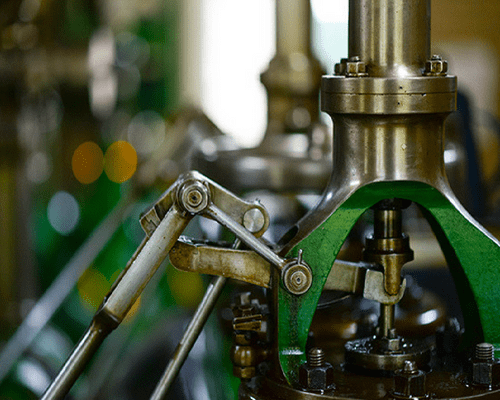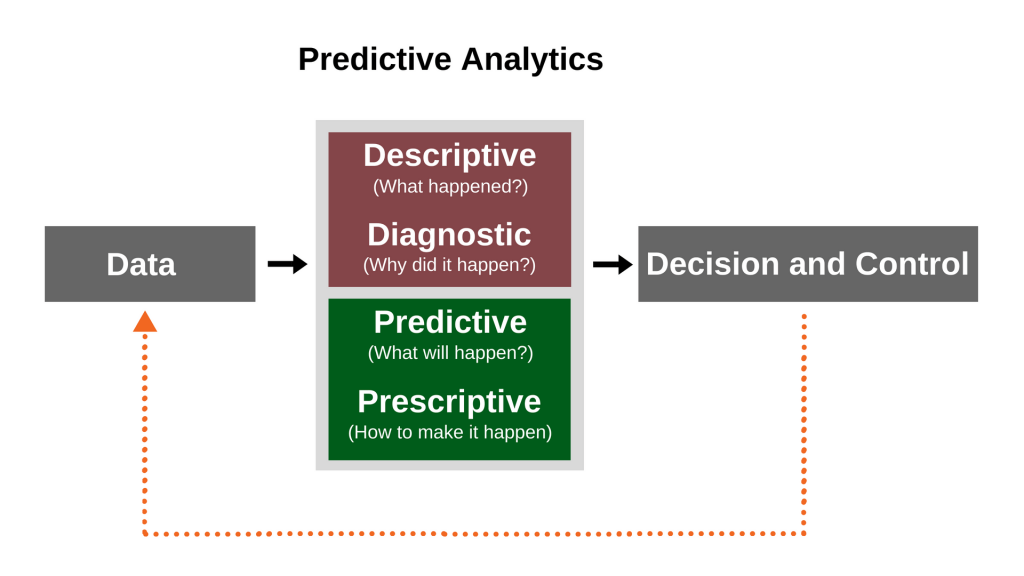Predictive analytics, an integral part of the smart manufacturing process, helps manufacturers to reduce manufacturing downtime and maximize production capabilities by as much as 25 to 30%.
Smart manufacturing
It involves the use of IoT devices in the assembly line to instill manufacturing intelligence in the product’s life cycle and improve the efficiency and productivity of manufacturing operations.
Operational technology is blending with information technology to create new opportunities for digital manufacturers. Terabytes of data produced by connected products, people and things can be accessed to extract deep insights and optimize the business and manufacturing processes to make them better than before.
Moreover, the insights availed from such voluminous data can help manufacturers identify new revenue streams by developing high-value service offerings focused upon how products and customers can interact in the real world.
The transformation induced by smart manufacturing is rapidly changing the landscape for manufacturers, enabling them to differentiate their USPs, and achieve operational excellence that can disrupt manufacturing markets.
It helps to:
- Make floor operation more efficient
- Reduce downtime
- Lower production costs
- Increase production levels
- Make the working environment more safer
- Enhance visibility of manufacturing process
- Improve quality assurance levels
According to a research by BI Intelligence, the smart manufacturing market is expected to reach $267 billion by 2020.
Predictive analytics
The manufacturing industry forms the economic backbone of any country relying upon manufacturing activities for the future growth of the country.
Traditionally, process control managers manually supervise the production process and keep a lookout for any machine breakdown. The managers have to be constantly on the floor and continually seek inputs from workers to monitor the process. It is not possible to predict when a piece of assembly line machine will break down and halt the production process.
Industrial IoT based smart manufacturing uses data collected from sensors placed in the assembly line to provide insights how the production process is currently underway.
However, raw data is not meaningful. One can’t use it as it is to plan effective actions for the future. But, specific information extracted from data can be analyzed to generate meaningful results.
In predictive analytics, data extracted from existing data sets is used to determine usage patterns and forecast possible future outcomes.
However, predictive analytics can’t forecast outcomes in an exact manner. Rather, it uses “what-if” type of case scenarios and asses risks to predict up to what levels a certain activity or event might occur in the future based upon the data available.
So, the results of predictive analytics can change as and when the data changes, or when new data is added.
Why predictive analytics is important
For manufacturing engineers, it is important to keep the production process up and running at all times to ensure maximum production occurs.
Predictive analytics aids manufacturing companies in up keeping their assembly line machines by collecting raw data from the sensors and analysing it to detect machine failures in the past. The software recognizes breakdown patterns in the past and tries to anticipate when a breakdown is likely to occur again in the future.
Using this information manufacturer can do maintenance in advance to mitigate the risk, or prepare for the breakdown in advance.
By anticipating breakdowns before they occur, production companies can reduce significant losses and deal with production related problems in a much better way. Predictive analytics, therefore, helps in carrying out predictive maintenance.
The ability to predict machine failures and correct them before they occur is a major driving force behind Industrial IoT investments. The IoT and predictive analytics are driving widespread market adoption. Manufacturers using predictive analytics methods in their manufacturing processes report as much as 25 to 30% gains in production levels.
How does it help the manufacturer?
- Production managers can know in advance which parts are likely to fail or malfunction first. They can create effective contingency plans to deal with breakdowns before they occur.
- A probable list of parts that might require replacement over the next few months can be availed. This gives ample time to place the orders in advance so the parts can be made readily available when required.
- Managers can control inventories in a better way. They can stock correct quantities of the required parts and avoid overstocking of less used parts. This way the manufacturer can free some capital by stocking only those parts which need to be replaced often.
- It helps to keep the entire factory on track by ensuring that the manufacturing equipment is running efficiently.
- Managers can feel more confident that the machinery won’t fail without warning while in the middle of a production run.
- The manufacturer can convey this assurance to customers to let them know that the products they’ve ordered will reach them on time.
Conclusion
Predictive analytics offers several benefits to manufacturers striving to reduce downtime and boost production levels. But, it can be difficult to design and implement effective predictive analytics solutions in your smart manufacturing process.
Partnering with an experienced IoT transformation company can help you save time and development costs. Furthermore, you can avail expert, useful and infallible guide to design your IoT solutions.
You might also like
Stay ahead in tech with Sunflower Lab’s curated blogs, sorted by technology type. From AI to Digital Products, explore cutting-edge developments in our insightful, categorized collection. Dive in and stay informed about the ever-evolving digital landscape with Sunflower Lab.





